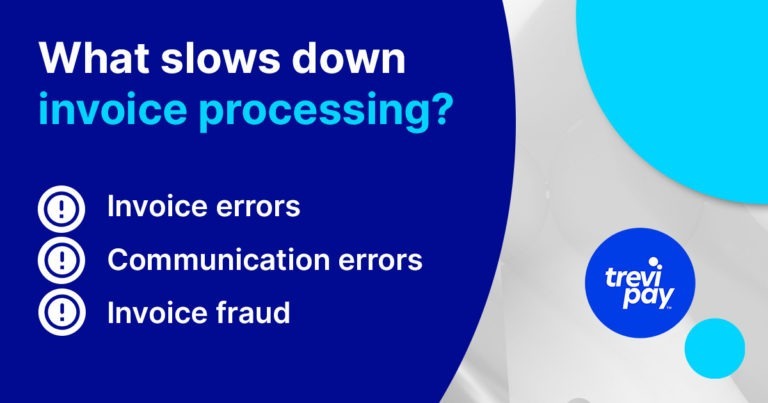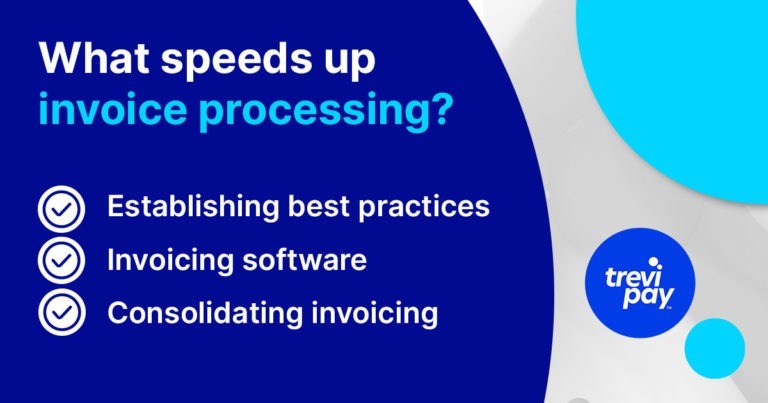Like any business processes, dealing with invoices should take as little of your internal resources as possible. Speed is usually a good indicator of efficiency.
While processing an invoice should be quick and efficient, this does not mean you should pay invoices immediately.
But how quick is too quickly to process an invoice, and how long is too long?
Here’s a breakdown of how long it should take to process an invoice, what might be slowing it down, and tips to speed it up.
What is invoice processing?
Invoice processing refers to each step involved in the administration of invoices.
When invoices are received, they are considered ‘open invoices‘. They need to go through several steps in order to become ‘closed,’ i.e., completed.
Accounts payable (AP) departments deal with most of these steps, including:
- Receiving invoices
- Invoice data entry
- Verification of invoices
- Approval of invoices
- Submitting invoices for payment
- Saving invoices in the general ledger
- Communications around invoice processing
AP automation can process many of these steps, but others require manual input. The whole process often needs the cooperation of colleagues and customers from different departments.
How long do invoices take to process?
The short answer is: it depends.
How long it takes to process an invoice depends largely on the size of your company, the type of software you are using (if any), and the payment and financing terms involved.
On average, it should take between three days to two weeks from the time you receive an invoice until when the money is deposited into your customer’s account. Automating B2B payment processes can significantly reduce the time it takes to process invoices, leading to faster payment cycles and improved cash flow management.
If it is taking you longer than two weeks to process invoices, there are a few common problems that may be responsible. In this case, there are likely to be steps you can take to speed up the process (see below, ‘What speeds up the invoicing process?’).
Net 30, 60, and 90 payment terms
Many businesses extend net 30 terms with their invoices, which means you have 30 days to make the payment. Some even give net 60, 90, or even higher terms.
This helps with your cash flow and gives you an opportunity to assess the product or service you have purchased before you pay for it.
Different industries and niches within industries might have different norms for their payment terms.
For example, many shipping companies pay freight brokers 60, 90, or even 120 days after an invoice is issued. It leads some freight brokers to turn to invoice factoring in order to maintain their cash flow.
Paying before the net term requirements might sometimes negatively affect your cash flow. But this doesn’t mean you can’t begin processing the invoice. You simply need to hold off on the final steps until the due date.
On the other hand, some suppliers might offer early payment discounts. In the long run, this can save your business a lot of money.
Why scale matters for invoice processing time
The scale of your business can significantly affect how long invoice processing takes.
If you are a large business, you may have more complex systems and dependencies in place than the average SME.
Having more levels of approval across different departments is often the cause of delays, especially when individuals required for approval may be off sick or on leave.
If you are an SME, you may have fewer invoices to process, but you will also likely have a smaller accounts payable department to deal with them.
So, the scale of your invoice processing operations may influence how you can reduce the processing time.
Invoice processing for business-to-business (B2B) companies
The way invoice processing is managed by B2B companies might be influenced by the longer payment terms and financing that could be available.
Invoice financing (including invoice discounting and invoice factoring) is a common type of financing used by B2B companies, where relatively large purchases are common.
It adds an extra layer of administration to invoice processing for the suppliers in B2B transactions. However, it can provide you with more time to process an invoice.
What slows down invoice processing?

1. Invoice errors
Invoices can be quite complex. They often feature multiple details that are required to identify and validate them. This means multiple fields, including invoice numbers, payment details, dates, and more, are needed. Mistakes can be made in any of these fields.
Correct invoices might also become incorrect if circumstances change. For example, you might need to return or change your order after you’ve already received the goods. In these situations, credit notes from your supplier come in handy.
Below are two of the most common kinds of invoicing errors.
1.1 Sales tax exemption mistakes
In the US, sales and tax rules vary from state to state. Certificates for tax exemptions need to be kept as supporting documentation for audits. Mistakes related to this issue are relatively common.
1.2. Value-Added Tax (VAT) errors
VAT is a relatively complex area. VAT mistakes range from simple typos to incorrectly reclaiming or not reclaiming it in certain cases.
2. Communication errors
Nowadays, the average office worker receives 121 emails a day. So, it’s easy for invoices to get ‘lost in the mail.’
And in both larger companies and SMEs, errors or delays may arise from invoices being sent or addressed to the wrong individual within your organization.
3. Invoice fraud
Invoice fraud generally refers to the act of malicious third parties deceiving businesses by sending invoices while posing as genuine partners.
So, you might receive an invoice that looks like it’s from your supplier. This could cause you to pay the fraudster rather than your supplier. This type of fraud relies on the recipient being too busy to double-check its authenticity.
This transaction will not only lose your business money, but it will cost you time and resources to correct.
In the worst-case scenario, it might cause you to ignore genuine invoices from your supplier because you assume they have already been paid. This could create a late payment fine or even damage your client relationships.
What speeds up invoice processing?

1. Establishing best practices
There are a number of best practices that can improve your invoice processing efficiency.
For example, you can designate one or more specific people in your accounting department to be responsible for processing invoices. Assigning the task in this way helps avoid confusion with the many other processes that take place in the department and help ensure invoices are dealt with in a timely manner.
You could also sit down with your accounting team and agree on specific deadlines for each step of the invoicing process. By doing this, you’ll have a Key Performance Indicator (KPI) that will ensure that payments are processed quickly and efficiently.
2. Invoicing software
Cloud-based invoicing software can automate many of the steps involved in processing an invoice, from sending colleagues approval request reminders to generating reports.
It can also reduce errors and generate valuable data, which can give you insight into your clients’ and employees’ processes and spending patterns. Such data can be used for business planning and forecasting purposes.
Some companies may still use manual paper-based processes. These are inefficient and pose a risk to the business as documents can be lost or even destroyed by accident.
One of the biggest benefits of invoicing software is giving your Accounts Payable department a centralized interface for recording and tracking all invoices.
3. Consolidated invoicing
Consolidated invoicing is when companies merge all of their invoices over a set period into one invoice.
For example, perhaps you usually make purchases at the beginning, middle, and end of each month. Rather than receive and process a separate invoice for each purchase, your supplier can consolidate them and send them at the end of each month.
This will save both you and the seller a lot of admin work.
4. Reducing fraud risk
Organizations must maintain effective control over their data and information by establishing access protocols, security measures, and hardware and software solutions.
They must also ensure that all personnel are aware of the importance of protecting data from unauthorized access or misuse.
Additionally, organizations should ensure that employees have access to only the information they need to do their work.
Conclusion:
Invoice processing is made up of several separate steps, which can include multiple players and interdependencies within an organization.
Assuming you don’t make any mistakes, an average SME should be able to process an invoice in between a few days and two weeks.
Larger companies have more invoices to process and are likely to benefit from AP automation software. This reduces errors and makes recording and tracking payments easier.
Businesses often have net terms attached to their invoices. This means they only need to be paid after a set period. Paying sooner than this may reduce your available cash flow, but it could provide early payment discounts.
Establishing best practices, consolidating invoices, and reducing the risk of fraud will also help you reduce the time and likelihood of mistakes in your invoice processing system.
Find out more about how our software can help improve and speed up your invoicing process.






